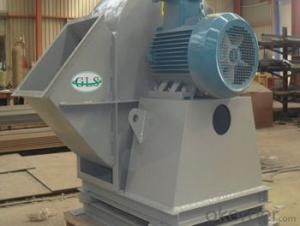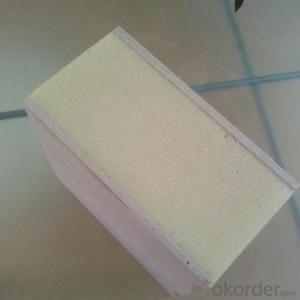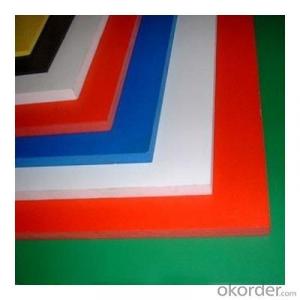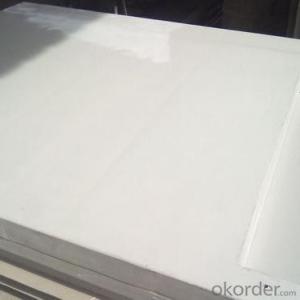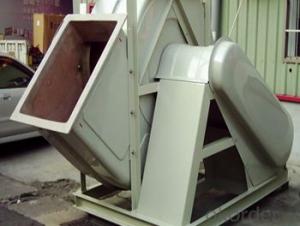FRP pultruded grating with Anti-ageing and best quality on sales
- Loading Port:
- Tianjin
- Payment Terms:
- TT OR LC
- Min Order Qty:
- 20000 m.t.
- Supply Capability:
- 300000 m.t./month
OKorder Service Pledge
OKorder Financial Service
You Might Also Like
PRODUCT DESCRIPTION
Pultruded grating is made by a particular assembly process, which using “I” shape as its main load-bearing and special rod to go through the bearing bar. Pultruded grating include the standard grating and the custom grating, the custom grating can be designed to meet customer’s requirement or special using condition by changing the shape, size and space of the bearing bars, the surface can be covered with lozenge panel, grit panel, or added the anti-slippery sand directly.
FRP pultruded grating has the most characteristics of molded grating, but it has its distinct advantages, it has very high fiberglass content in the loading direction, so it has very high load capability, it has more superiority when used at wide span, so that the basic support will be decreased and the project cost will be reduced accordingly.
SPECIFICATION
Thickness (mm) | Bar width (mm) | Open space (mm) | Open rate (%) | Approx weight (kg/m |
25.4 | 15.2 | 22.8 | 60 | 13.2 |
25.4 | 15.2 | 15.2 | 50 | 15.9 |
25.4 | 15.2 | 10.1 | 40 | 18.5 |
25.4 | 40 | 10.8 | 21 | 14.5 |
38.1 | 15.2 | 22.8 | 60 | 15.8 |
38.1 | 15.2 | 15.2 | 50 | 19.1 |
38.1 | 15.2 | 10.1 | 40 | 22.4 |
50.8 | 25.4 | 25.4 | 50 | 16.6 |
50.8 | 25.4 | 12.7 | 33 | 21.1 |
CHOICE FOR PULTRUDED GRATING
Resin: GP resin, ISO resin, VE resin, Phenol resin
Color choice: Yellow, gray, green, custom color
Surface choice: Groove surface, grit surface, lozenge cover surface
FEATURES
a. Anti-corrosion and anti-rust
b. Light weight and high strength
c.Good economic benefit
d. Anti- fatigue
e. Safe and anti-slippery
f. Anti-ageing
g. Easy of maintenance
h. Excellent electromagnetism property
FIELDS SERVED
Sewage treatment,
water supply and drainage,
chemical industry,
oil industry,
power engineering,
pulp and paper,
construction engineering,
spinning, marine engineering.
APPLICATION
Operation terrace,
stair walkway,
ground floor,
trench cover,
sidewalk,
foot bridge,
equipment safety fence,
scaffold.
COMPANT DESCRIPTION
CNBM,China National Building Materials Group is a state-owned enterprise in charge of administrative affairs in china building materials industry. Established in 1984, CNBM is a large group corporation of building materials with total assets of 25 billion RMB and a total staff of 30,000.CNBM now owns 200 subordinating firms of solely owned and joint-venture companies.
CNBM International Corporation is one subsidiary of CNBM, we focus on offering good-quality products,professional service and complete solution to our customers. Strong delivery capacity, advanced technology& management, strong financing capability and excellent after-sale service are our advantages in sharing international market.
FAQ
1.Q:Are you factory or trading company ?
A:We are Factory produce FRP machines and FRP products.
2.Q:If can customized by customers requirements?
A:yes,we can produce the machine with customized size.
3.Q:How about the payment?
A:We accept any kind of payment.
4.Q:What is the guarantee?
A:Gurantee is one year.
5.Q:If you can training?
A:yes ,we can training in our factory also can send engineers to your factory training.
PICTURES
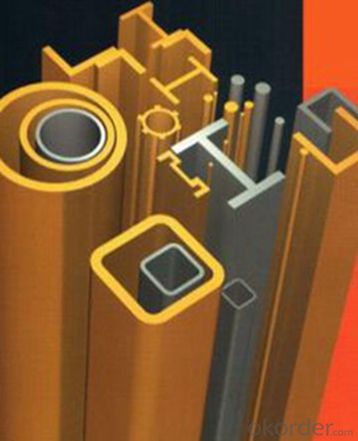
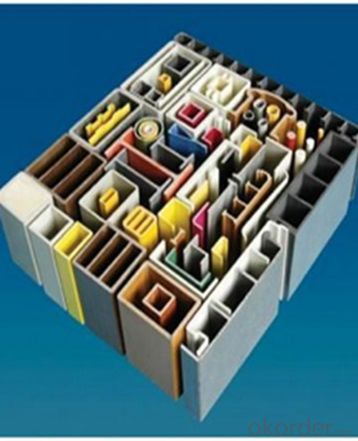
- Q:Do FRP pultrusion profiles require any special tools for installation?
- Installation of FRP pultrusion profiles necessitates the use of specialized tools. These profiles are manufactured through a continuous process wherein fibers are drawn through a resin bath and subsequently into a heated die, resulting in a material that is not only strong and lightweight but also resistant to corrosion. To ensure the proper installation of FRP pultrusion profiles, various specific tools are commonly employed. These tools encompass: 1. Cutting Tools: During installation, it may be necessary to cut FRP profiles to specific lengths. To achieve clean and precise cuts, specialized cutting tools like high-speed saws or abrasive wheels are frequently utilized. 2. Drilling Tools: For the insertion of fasteners or other fittings, it might be necessary to drill holes in FRP profiles. To prevent damage to the profile while creating these holes, special drill bits designed for working with composite materials are typically employed. 3. Fastening Tools: Depending on the application, it may be necessary to fasten FRP profiles to other surfaces or structures. Commonly used fasteners include stainless steel screws, bolts, or adhesives, which are specifically chosen for their ability to securely hold the profiles in place. 4. Joining Tools: In certain instances, it may be necessary to join FRP profiles together in order to create longer lengths or more intricate shapes. To ensure a robust and secure connection, special joining techniques such as bonding, riveting, or the use of mechanical connectors are employed. It should be noted that the specific tools required for installation may vary depending on factors such as the complexity and size of the project, as well as the recommendations provided by the manufacturer. Therefore, it is always advisable to consult the manufacturer's installation guidelines or seek professional assistance to ensure the proper installation and optimal performance of FRP pultrusion profiles.
- Q:Can FRP pultrusion profiles be used in the construction of solar panel frames?
- Yes, FRP (Fiber Reinforced Polymer) pultrusion profiles can be used in the construction of solar panel frames. FRP pultrusion profiles are lightweight, strong, and resistant to corrosion, making them an ideal material choice for solar panel frames. The durability and high strength-to-weight ratio of FRP pultrusion profiles ensure that the frames can withstand various weather conditions and long-term exposure to sunlight. Additionally, FRP pultrusion profiles can be easily customized to meet specific design requirements, allowing for flexibility in the construction of solar panel frames. Overall, the use of FRP pultrusion profiles in solar panel frame construction offers numerous advantages, making it a suitable choice for the solar energy industry.
- Q:How do FRP pultrusion profiles perform in seismic zones?
- FRP pultrusion profiles are highly suitable for use in seismic zones due to their inherent properties and characteristics. One of the key advantages of FRP pultrusions is their excellent strength-to-weight ratio, which allows them to efficiently withstand seismic forces without adding significant weight to the structure. In seismic zones, buildings and structures are subjected to intense ground motions during an earthquake. FRP pultrusion profiles possess high stiffness and strength, enabling them to effectively resist the lateral forces generated by seismic activity. These profiles have a high modulus of elasticity, which allows them to maintain their shape and structural integrity even under extreme seismic loads. Moreover, FRP pultrusions exhibit excellent corrosion resistance, making them highly durable in seismic zones. Unlike traditional materials such as steel or concrete, FRP profiles do not corrode when exposed to moisture, chemicals, or salts, which are commonly found in seismic regions. This corrosion resistance ensures the long-term performance and structural integrity of FRP pultrusion profiles, even in harsh environmental conditions. Another advantage of FRP pultrusions in seismic zones is their flexibility and ability to dampen vibrations. During an earthquake, the ground motions cause structures to vibrate. The inherent damping properties of FRP materials help absorb and dissipate these vibrations, reducing the potential for structural damage. Additionally, FRP pultrusion profiles can be designed and manufactured to meet specific seismic requirements and codes. They can be reinforced with additional layers or designed with specific geometries to enhance their seismic performance, ensuring that they meet the necessary safety standards in seismic zones. Overall, FRP pultrusion profiles offer numerous benefits for use in seismic zones. Their high strength-to-weight ratio, corrosion resistance, damping properties, and design flexibility make them an excellent choice for constructing seismic-resistant structures while ensuring durability and safety.
- Q:How do FRP pultrusion profiles handle torsion loads?
- FRP pultrusion profiles are renowned for their exceptional mechanical properties and impressive strength-to-weight ratio, making them an optimal selection for managing torsion loads. When exposed to torsion, these profiles are engineered to endure twisting forces and sustain their structural integrity. The construction of these profiles is pivotal to their capacity for handling torsion loads. FRP pultrusion profiles are crafted by pulling reinforcing fibers, such as fiberglass, through a bath of resin and subsequently through a heated die. This process aligns the fibers in the direction of the load, resulting in remarkable strength and rigidity. In the case of torsion loads, the aligned fibers within the profile's cross-section resist the twisting force by distributing it along the profile's length. This distribution of force aids in averting localized stress concentrations, thereby diminishing the risk of deformation or failure. Furthermore, the resin matrix encompassing the fibers acts as a binding agent, securing the fibers together and providing defense against environmental elements such as moisture, chemicals, and UV radiation. This ensures the profile's long-term durability and stability when subjected to torsion loads. Moreover, FRP pultrusion profiles can be tailored with specific cross-sectional shapes and dimensions to enhance their torsional strength. By optimizing the geometric configuration, such as augmenting the wall thickness or adding reinforcing ribs, the profiles can be further reinforced to meet the desired requirements for torsion loads. All in all, FRP pultrusion profiles excel in managing torsion loads due to their inherent properties, manufacturing process, and design adaptability. Their ability to withstand twisting forces, combined with their lightweight nature, establishes them as a dependable and cost-efficient choice for diverse applications, including construction, infrastructure, aerospace, and automotive industries.
- Q:Can FRP pultrusion profiles be used in the construction industry?
- Indeed, the construction industry can utilize FRP (Fiber Reinforced Polymer) pultrusion profiles. These profiles offer numerous benefits that make them appropriate for diverse construction applications. To begin with, FRP pultrusion profiles possess exceptional strength while remaining lightweight. Consequently, they are an excellent choice for construction projects as they provide a high strength-to-weight ratio. This reduces the overall weight of the structure while preserving its structural integrity. This advantage is particularly valuable for applications like bridges, walkways, and platforms. Furthermore, FRP pultrusion profiles exhibit a high level of resistance to corrosion. Unlike conventional construction materials such as steel or wood, FRP does not rust, rot, or corrode when exposed to harsh environmental conditions, chemicals, or moisture. Consequently, FRP profiles are ideal for outdoor or marine applications where corrosion can be a concern, such as seawalls, docks, or offshore structures. In addition, FRP pultrusion profiles possess excellent electrical and thermal insulation properties. This makes them suitable for applications where minimizing electrical conductivity is necessary, such as electrical enclosures or cable trays. Moreover, FRP profiles have low thermal conductivity, which enhances energy efficiency in buildings by reducing heat transfer. Furthermore, FRP pultrusion profiles are highly durable and require minimal maintenance. They boast a long service life and do not necessitate regular painting, sealing, or treatment like traditional materials. Consequently, significant cost savings can be achieved throughout the life cycle of a construction project. Lastly, FRP pultrusion profiles can be customized to meet specific strength, stiffness, and dimensional requirements. They can be produced in various shapes, sizes, and colors, allowing for flexibility in design. This versatility renders FRP profiles suitable for a wide range of construction applications, including beams, columns, gratings, handrails, and structural components. To summarize, FRP pultrusion profiles are a viable choice for the construction industry due to their lightweight nature, high strength, corrosion resistance, electrical and thermal insulation properties, durability, low maintenance requirements, and design flexibility.
- Q:Is the test standard for FRP pultruded profiles and FRP gratings the same?
- Pultruded section is produced by extrusion automatic production line. Glass fiber reinforced plastic grille is produced by mould and hand laying process. If it is a pultrusion grille, it is also made of pultruded profiles, and it is different from the FRP molded grille.
- Q:Can FRP pultrusion profiles be used in the construction of offshore platforms?
- FRP pultrusion profiles have the capability to be utilized in the construction of offshore platforms. These profiles possess a range of beneficial characteristics that render them appropriate for offshore applications. To begin with, FRP pultrusion profiles exhibit a combination of lightness and strength, which is vital for withstanding the harsh environmental conditions encountered by offshore platforms, such as strong winds, waves, and corrosive saltwater. The high strength-to-weight ratio of FRP makes it an optimal choice for reducing overall weight while preserving structural integrity. Moreover, FRP is exceptionally resistant to corrosion, unlike conventional construction materials like steel. This is particularly crucial in offshore environments where metal structures can rapidly corrode due to exposure to saltwater. FRP pultrusion profiles remain unaffected by rust or corrosion, resulting in extended service life and diminished maintenance costs. Additionally, FRP pultrusion profiles possess the capability to be designed and manufactured with exceptional fire resistance properties. This is of utmost importance for offshore platforms, as fire incidents can lead to catastrophic consequences. FRP materials can be engineered to satisfy specific fire safety standards, providing an additional layer of protection. Furthermore, FRP pultrusion profiles offer design flexibility, as they can be easily tailored to meet individual project requirements. This allows for the creation of intricate shapes and sizes, facilitating efficient construction and installation of offshore platforms. In conclusion, the lightweight, corrosion-resistant, fire-resistant, and customizable nature of FRP pultrusion profiles deems them an appropriate choice for constructing offshore platforms. They offer numerous advantages over traditional materials, contributing to enhanced safety, durability, and cost-effectiveness in offshore construction projects.
- Q:Can FRP pultrusion profiles be used in the construction of railway sleepers?
- Yes, FRP (Fiber Reinforced Polymer) pultrusion profiles can be used in the construction of railway sleepers. FRP pultrusion profiles offer several advantages that make them suitable for this application. Firstly, FRP pultrusion profiles are lightweight yet strong, making them ideal for railway sleepers. They have high strength-to-weight ratios and can withstand heavy loads, making them a reliable choice for supporting the weight of trains. Additionally, the lightweight nature of FRP profiles makes them easier to transport and install, reducing construction time and costs. Secondly, FRP pultrusion profiles are highly resistant to corrosion, which is a crucial factor for railway sleepers. Traditional materials such as wood or steel are susceptible to corrosion when exposed to moisture and chemicals. FRP profiles, on the other hand, are non-corrosive and do not require regular maintenance or replacement due to rust or decay. Furthermore, FRP pultrusion profiles offer excellent durability and longevity. They are resistant to UV radiation, extreme temperatures, and chemicals, ensuring a longer lifespan compared to traditional materials. This reduces the need for frequent replacements, resulting in lower maintenance and lifecycle costs. Moreover, FRP pultrusion profiles can be customized to meet specific design requirements. They can be manufactured in various shapes and sizes to fit different railway sleeper designs, offering flexibility in construction. Additionally, they can be made in different colors, allowing for aesthetic customization. Lastly, FRP pultrusion profiles offer excellent electrical insulation properties. This is crucial for railway sleepers, as they need to provide insulation between the train tracks and the ground to prevent electrical interference and ensure safe operation. In conclusion, FRP pultrusion profiles are a suitable choice for the construction of railway sleepers due to their lightweight, high strength, corrosion resistance, durability, customization options, and electrical insulation properties.
- Q:Do FRP pultrusion profiles have any limitations or drawbacks?
- FRP pultrusion profiles indeed have certain limitations and drawbacks that need to be taken into account. One of these limitations is their lower stiffness compared to traditional materials like steel or aluminum. As a result, they may not be suitable for applications that demand high structural rigidity or heavy loads. Another constraint is their susceptibility to creep, which refers to the gradual deformation of the material under a constant load over time. This can adversely affect the long-term performance and durability of the profiles, particularly in scenarios where they face sustained stress. Moreover, FRP pultrusion profiles generally incur higher production costs compared to traditional materials. The manufacturing process involves pultruding continuous fibers through a resin matrix, requiring specialized equipment and expertise. Consequently, the higher production expenses make FRP pultrusion profiles less economically viable for certain applications. Additionally, FRP pultrusion profiles are typically not suitable for high-temperature applications. The resin matrix used in their production can degrade or soften at elevated temperatures, thereby restricting their use in environments where thermal resistance is crucial. Finally, FRP pultrusion profiles may have limited design flexibility compared to other materials. The pultrusion process typically yields profiles with constant cross-sections and limited geometric complexity. Consequently, their use is restricted in applications that necessitate intricate shapes or customized designs. Despite these limitations, FRP pultrusion profiles offer several advantages, such as a high strength-to-weight ratio, corrosion resistance, and electrical insulation properties. Therefore, it is crucial to thoroughly consider the specific requirements of the application before opting for FRP pultrusion profiles.
- Q:Are FRP pultrusion profiles resistant to high winds or hurricanes?
- FRP pultrusion profiles offer exceptional resistance against high winds and hurricanes. Combining the robustness of fiberglass with the longevity of polymers, FRP is a lightweight yet remarkably sturdy material that can endure severe weather conditions. Extensive testing has proven that FRP pultrusion profiles exhibit outstanding wind resistance properties. They possess a remarkable stiffness-to-weight ratio, enabling them to withstand the powerful forces generated by high winds without deformation or breakage. Additionally, the inherent flexibility of FRP permits it to absorb and distribute wind forces, minimizing the risk of damage. In the face of hurricanes, FRP pultrusion profiles have demonstrated their capability to withstand the intense winds and airborne debris associated with such extreme weather events. They have been successfully employed in various applications, including building facades, bridges, and utility poles, in areas prone to hurricanes. Moreover, FRP pultrusion profiles possess corrosion resistance, providing an extra advantage in withstanding high winds and hurricanes. Unlike traditional materials like steel or wood, FRP profiles do not rust or decay when exposed to moisture, making them even more suitable for these demanding weather conditions. Overall, with their exceptional strength, durability, flexibility, and corrosion resistance, FRP pultrusion profiles are an excellent choice for applications requiring resistance against high winds or hurricanes.
1. Manufacturer Overview |
|
|---|---|
| Location | |
| Year Established | |
| Annual Output Value | |
| Main Markets | |
| Company Certifications | |
2. Manufacturer Certificates |
|
|---|---|
| a) Certification Name | |
| Range | |
| Reference | |
| Validity Period | |
3. Manufacturer Capability |
|
|---|---|
| a)Trade Capacity | |
| Nearest Port | |
| Export Percentage | |
| No.of Employees in Trade Department | |
| Language Spoken: | |
| b)Factory Information | |
| Factory Size: | |
| No. of Production Lines | |
| Contract Manufacturing | |
| Product Price Range | |
Send your message to us
FRP pultruded grating with Anti-ageing and best quality on sales
- Loading Port:
- Tianjin
- Payment Terms:
- TT OR LC
- Min Order Qty:
- 20000 m.t.
- Supply Capability:
- 300000 m.t./month
OKorder Service Pledge
OKorder Financial Service
Similar products
New products
Hot products
Hot Searches
Related keywords
